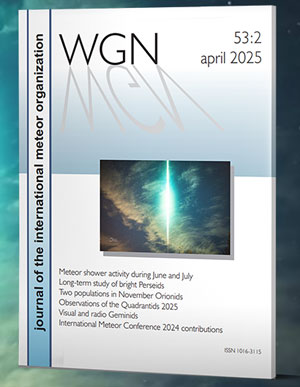The typical maximum of the Perseids falls into a period between 12h and 14h30m UT on 2012 August 12. Although the Moon is a waning crescent, three days after last quarter on August 12, it will rise from mid-northern locations around local midnight to one a.m. Its brightness and relative proximity to the Perseid radiant should be considered more of a nuisance than a deterrent, even so. Such mid-northern latitudes are the more favoured for Perseid observing, as from here, the shower’s radiant is usefully observable from 22h–23h local time onwards, gaining altitude throughout the night. All forms of observing can be carried out on the shower, though unfortunately, it cannot be usefully observed from most of the southern hemisphere.
We encourage visual observations to be made according to the standard procedure
and submitted through the online report form.
Such observations will automatically be included in the ZHR activity graph below.
Activity graph below is updated every 15 minutes – click for details.





 You saw something bright and fast? Like a huge shooting star? Report it: it may be a fireball.
You saw something bright and fast? Like a huge shooting star? Report it: it may be a fireball.  You counted meteors last night? Share your results with us!
You counted meteors last night? Share your results with us!  You took a photo of a meteor or fireball? You have a screenshot of your cam? Share it with us!
You took a photo of a meteor or fireball? You have a screenshot of your cam? Share it with us!  You caught a meteor or fireball on video? Share your video with us!
You caught a meteor or fireball on video? Share your video with us!